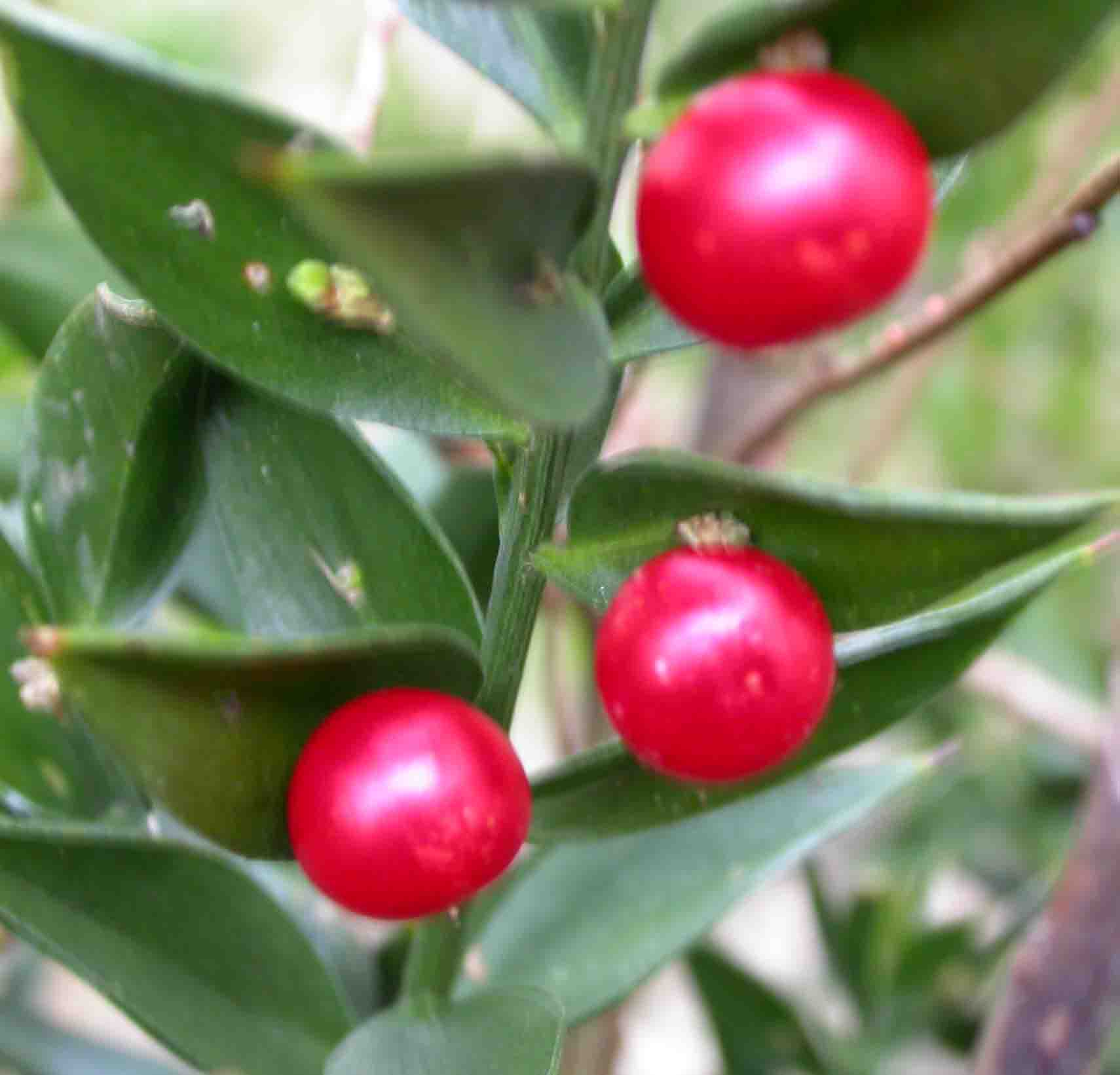

The term CVD is applied to the full spectrum of symptoms from C 0 to C 6, whereas CVI is generally restricted to more severe disease (C 4 to C 6). 8 CVD is often graded according to 7 classes of CEAP classification (e.g., clinical, etiologic, anatomical, and pathophysiological), which range from C 0 to C 6.
Butchers broom skin#
CVD of the lower limbs can be recognized by symptoms such as varicose veins and venous ulcers, as well as edema, venous eczema, hyperpigmentation of the skin of the ankle, atrophie blanche (white scar tissue), and lipodermatosclerosis.

Human studies have investigated formulations containing butcher’s broom for their effects on insufficient blood flow to the lower limbs, including in chronic venous disease (CVD) and/or CVI.

6 Butcher’s broom medicinal products, in compliance with the quality standards set out by the European Pharmacopoeia, 7 may be registered and labeled as traditional herbal medicinal products (THMPs) for the relief of symptoms of discomfort and heaviness of legs related to minor venous circulatory disturbances and symptomatic relief of itching and burning associated with hemorrhoids, 6 with the noted limitation that such application is based solely on “long-standing use.”
Butchers broom registration#
5 The European Medicines Agency (EMEA) finalized its Community Herbal Monograph in 2008 for the registration of butcher’s broom products as traditional herbal medicines. 4 Similarly, the European Scientific Cooperative on Phytotherapy (ESCOP) recommended solid or liquid extracts of the dried, whole or fragmented rhizome for supportive therapy for symptoms of CVI and hemorrhoids. The German Commission E approved the use of butcher’s broom rhizome extract for discomforts of CVI, such as pain and heaviness, as well as for cramps in the legs, itching, and swelling, and for supportive therapy for complaints of hemorrhoids, such as itching and burning. These properties have led to the modern uses of the plant as supportive care for chronic venous insufficiency (CVI), hemorrhoids, and varicose veins. The root of butcher’s broom contains ruscogenen and neoruscogenin, which have been found to have anti-inflammatory characteristics and to cause contraction of veins. He recommended that patients take a decoction of the root (made by boiling the plant’s woody parts) orally along with spreading a poultice of the berries over the fracture. In the 17 th century, the English herbalist Nicholas Culpepper used butcher’s broom to help the healing of fractured bones. In the first century CE, Greek physicians used butcher’s broom to treat kidney stones. 2 Many cultures soaked the rootstock in water or wine to help alleviate abdominal complaints. 3 (It was later discovered that the essential oil in the plant is antibacterial.) Europeans have been using the shrub as a laxative and diuretic for almost 2,000 years. The common name “butcher’s broom” came from Europe, where butchers would bundle the shrub into a broom to sweep and cleanse their cutting blocks, due to the stiffness of the material.


 0 kommentar(er)
0 kommentar(er)
